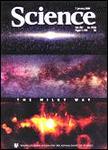版权所有:内蒙古大学图书馆 技术提供:维普资讯• 智图
内蒙古自治区呼和浩特市赛罕区大学西街235号 邮编: 010021

作者机构:Hinxton United Kingdom Harvard Medical School Department of Genetics Boston MA United States Wyss Institute for Biologically Inspired Engineering Harvard University Boston MA United States Broad Institute of Massachusetts Institute of Technology and Harvard University Cambridge MA United States Department of Bioengineering Imperial College London London United Kingdom Harvard-MIT Program in Health Sciences and Technology Cambridge MA United States Harvard Medical School Boston MA United States
出 版 物:《Science》 (Sci.)
年 卷 期:2025年第387卷第6733期
页 面:eado3979页
基 金:Wellcome Sanger Institute EGL Charitable Foundation Wellcome, (220540/Z/20/A) Wellcome Knut och Alice Wallenbergs Stiftelse, (KAW 2019.0581) Knut och Alice Wallenbergs Stiftelse Biotechnology and Biological Sciences Research Council, BBSRC, (BB/V509425/1) Biotechnology and Biological Sciences Research Council, BBSRC
摘 要:We lack tools to edit DNA sequences at scales necessary to study 99% of the human genome that is noncoding. To address this gap, we applied CRISPR prime editing to insert recombination handles into repetitive sequences, up to 1697 per cell line, which enables generating large-scale deletions, inversions, translocations, and circular DNA. Recombinase induction produced more than 100 stochastic megabase-sized rearrangements in each cell. We tracked these rearrangements over time to measure selection pressures, finding a preference for shorter variants that avoided essential genes. We characterized 29 clones with multiple rearrangements, finding an impact of deletions on expression of genes in the variant but not on nearby genes. This genome-scrambling strategy enables large deletions, sequence relocations, and the insertion of regulatory elements to explore genome dispensability and organization. © 2025 American Association for the Advancement of Science. All rights reserved.